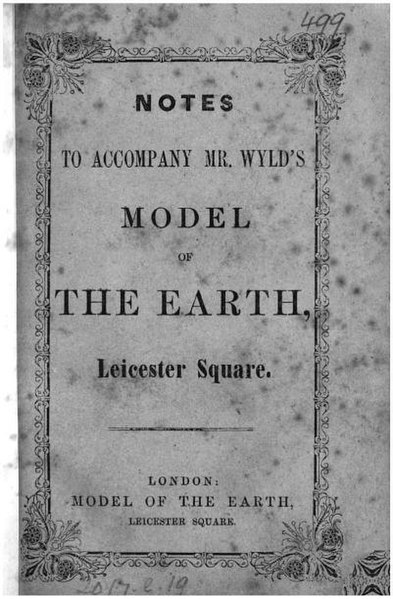Wyld's Great Globe was an attraction situated in London's Leicester Square between 1851 and 1862, constructed by James Wyld (1812–1887), a distinguished mapmaker and former Member of Parliament for Bodmin.
James Wyld (the Younger) (1812–1887)
An early view of the Great Globe without the galleries
This image of the Globe (with completed galleries) shows a placard bearer in the foreground advertising one of Wyld's competitors: The Panorama of Paris and Versailles.
Wyld's accompanying guide ran to 132 pages.
Leicester Square is a pedestrianised square in the West End of London, England. It was laid out in 1670 as Leicester Fields, which was named after the recently built Leicester House, itself named after Robert Sidney, 2nd Earl of Leicester. The square was originally a gentrified residential area, with tenants including Frederick, Prince of Wales and the artists William Hogarth and Joshua Reynolds. It became more down-market in the late 18th century as Leicester House was demolished and retail developments took place, becoming a centre for entertainment. Major theatres were built in the 19th century, which were converted to cinemas towards the middle of the next. Leicester Square is the location of nationally significant cinemas such as the Odeon Luxe Leicester Square and Empire, Leicester Square, which are often used for film premieres. The nearby Prince Charles Cinema is known for its screenings of cult films and marathon film runs. The square remains a tourist attraction which hosts events, including for the Chinese New Year.

Leicester Square in July 2012, following redevelopment
Leicester Square in 1750, looking north towards Leicester House, then one of the largest houses in London.
Leicester Square overlooking the Alhambra Theatre in 1874
Leicester Square in 1880, looking north east







